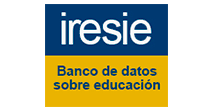LINGUAGEM POÉTICA EM SINTONIA COM A CRIANÇA
DOI:
https://doi.org/10.5216/ia.v38i3.27757Keywords:
criança, educação, leitura, humanizaçãoAbstract
A criança precisa de arte para a sua formação. A poesia abarca características que ajudam na constituição e na humanização da criança – sensível às belezas do universo estético e da esfera cultural e social da qual faz parte. Nesse contexto, a poesia mostra-se aberta à infância e próxima de quem está descobrindo o mundo, as palavras, os sons. Por meio da leitura ou da audição de poemas, os pequenos têm condições de ampliar o horizonte de conhecimento, pois a poesia conversa com o leitor mirim e auxilia o processo educativo. Este artigo integra um estudo maior sobre a educação pelo poético e busca refletir sobre como essa linguagem pode construir saberes e auxiliar na formação da criança. Para efetivar a reflexão, apoia-se em teóricos da área da educação e da literatura, como Dewey (1980), Freire (1996), Candido (1995), Paz (1982), Pound (1990), Paviani (1996) e Ramos (2010). A partir desses fundamentos e de princípios postos por Antonio Candido (2008), analisa-se a poesia “Pausa”, de Mario Quintana (2005), a fim de discutir seu potencial para humanizar o leitor.Downloads
Downloads
Published
How to Cite
Issue
Section
License
Inter-Ação uses the Creative Commons Attribution 4.0 License for Open Access Journals (Open Archives Initiative - OAI) as the basis for the transfer of rights. Open access means making documents available on the Internet free of charge, so that users can read, download, copy, distribute, print, search, or link to the full text of documents, process them for indexing, use them as input data for software programs, or use them for any other lawful purpose, without financial, legal, or technical barriers.
Authors publishing in this journal agree to the following conditions:
1) Authors retain copyright and grant the journal the right of first publication, with the work simultaneously licensed under the Creative Commons Attribution License, which permits redistribution of the work with attribution and first publication in this journal.
2) Authors are permitted to enter into additional, separate agreements for non-exclusive distribution of the version of the work published in this journal (e.g., for publication in an institutional repository or as a book chapter), with attribution and first publication in this journal.
3) Authors are permitted and encouraged to publish and distribute their work online (e.g. in institutional repositories or on their home page) at any time before or during the editorial process, as this may generate productive changes as well as increase the impact and citation of the published work.















